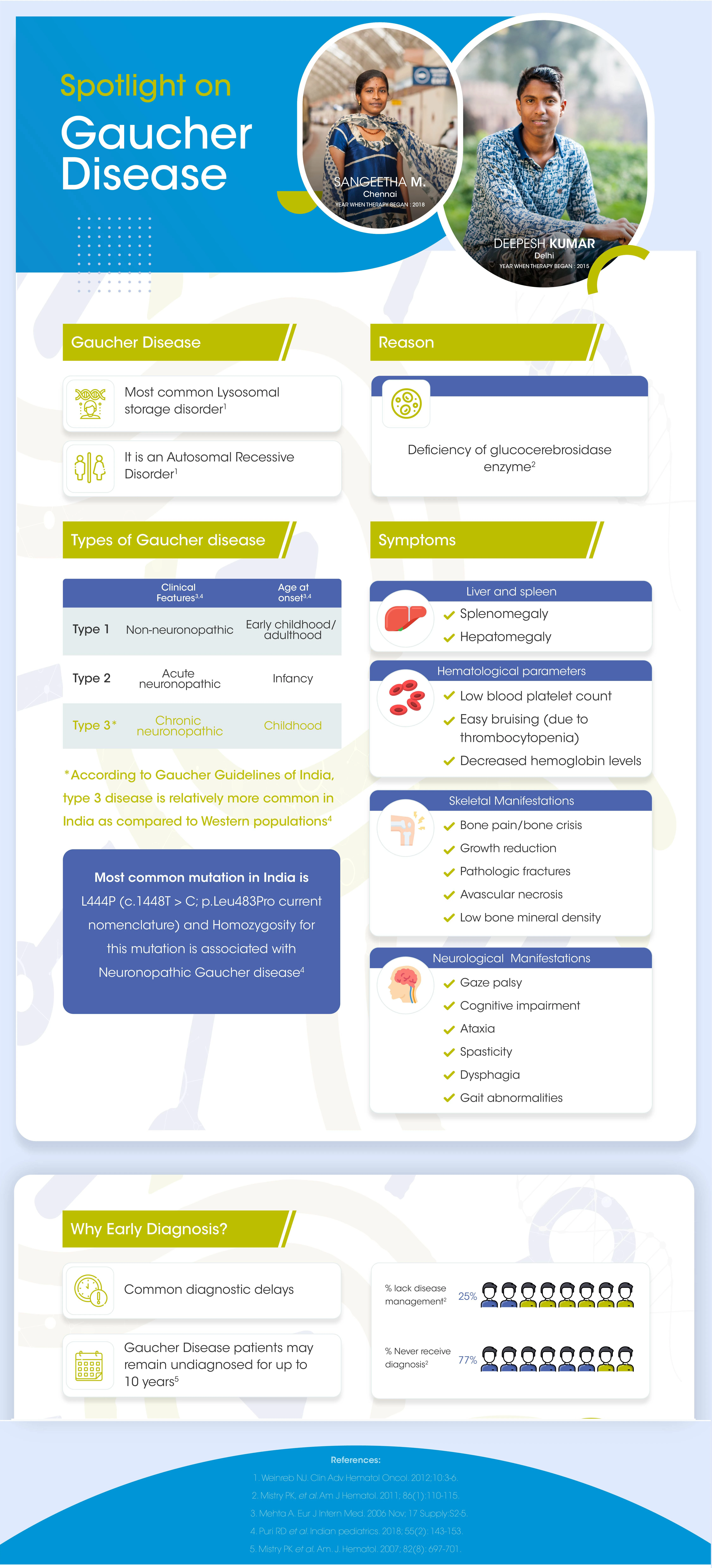Spotlight on Gaucher Disease

Gaucher disease is the most common lysosomal storage disorder. It is an autosomal recessive disorder that is caused by the deficiency of the glucocerebroside enzyme. There exist three types: Type 1 in which the clinical features are non-neuronopathic and begin in early childhood or adulthood, Type 2 with the clinical feature of acute neuronopathy, which begins in infancy and Type 3, which includes chronic neuronopathic and may begin in childhood. According to the Gaucher Guidelines of India, type 3 disease is relatively more common in India as compared to the western population. The most commonly observed symptoms are those that affect the liver and spleen, splenomegaly and hepatomegaly. In the blood, it manifests as a low blood platelet count, easy bruising (due to thrombocytopenia), and decreased haemoglobin levels. In the skeletal system, it manifests as bone pain/bone crisis, reduction in growth, pathologic features, avascular necrosis, and low bone mineral density. Some of the neurological manifestations are gaze palsy, cognitive impairment, ataxia, spasticity, dysphagia, and gait abnormalities. The most common mutation in India is L444P homozygosity, and this mutation is associated with neuronopathic Gaucher disease. Early diagnosis is very essential, but despite this, nearly 77% never receive a diagnosis, and 25% of those diagnosed, lack disease management. Common diagnostic methods include dried blood spots (DBS), in which a simple enzyme assay test is performed; positive DBS, which is highly indicative of Gaucher disease, and molecular analysis of the GBA gene, which confirms the diagnosis.




